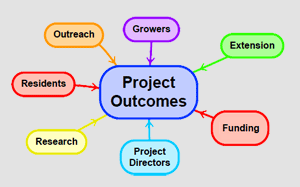Schools Find Online School IPM Best Management Practices Worth the Investment in Time and Training
 |
In 2013 the Northeastern IPM Center funded Expanding School IPM Implementation within the Northeastern United States: A Best Management Practices Approach, led by Lynn Braband of Cornell University. This project evaluated, incorporated, and augmented existing resources in the development of a school IPM best management practices (BMP) website. They piloted the website in train-the-trainer events in three states and systematically evaluated the website through surveys, focus groups, and training events.
Ninety-three percent of the participants in trainings and focus groups felt that the investment of time and training for the BMP would be worth the effort for schools. In addition, 89 percent reported a strong need for the resource, 81 percent felt the document was well organized, 86 percent reported the content was accurate, 80 percent felt it was easy to use, 87 percent felt it was flexible enough to adapt to different schools and 85 percent reported they thought it was a valuable tool for pest prevention and problem solving.
The project has led to improved resources and training which should increase the number of schools practicing high-level IPM, thereby safeguarding human health and the environment. The resources created are available on the website. The project team encourages schools to use pest prevention and pest monitoring tools to reduce reliance on pesticides and to select least-risk control methods to minimize risks of human exposure to pests and pesticides. Because of this project, schools that practice IPM are likely to have improved indoor air quality and playgrounds and athletic fields that are safer for play. For example, in a 2006 study, the use of the Monroe model in 10 school districts across 7 states indicates an average 71 percent reduction in pesticide applications and 78 percent reduction in pest complaints to school administrators (Gouge et al., 2006[1]). Therefore, the project most likely has benefited schools by safeguarding the health of the students, staff, and environment.
[1] Gouge, D.H., M.L. Lame, and J.L. Snyder. 2006. Use of an Implementation Model and Diffusion Process for Establishing Integrated Pest Management in Arizona Schools. American Entomologist 52(3):190–196.
— by KEOKI HANSEN
The Northeastern IPM Center promotes integrated pest management for reducing risks to human health and the environment. If republishing our news, please acknowledge the source (“From Northeast IPM Insights”) along with a link to our website.
